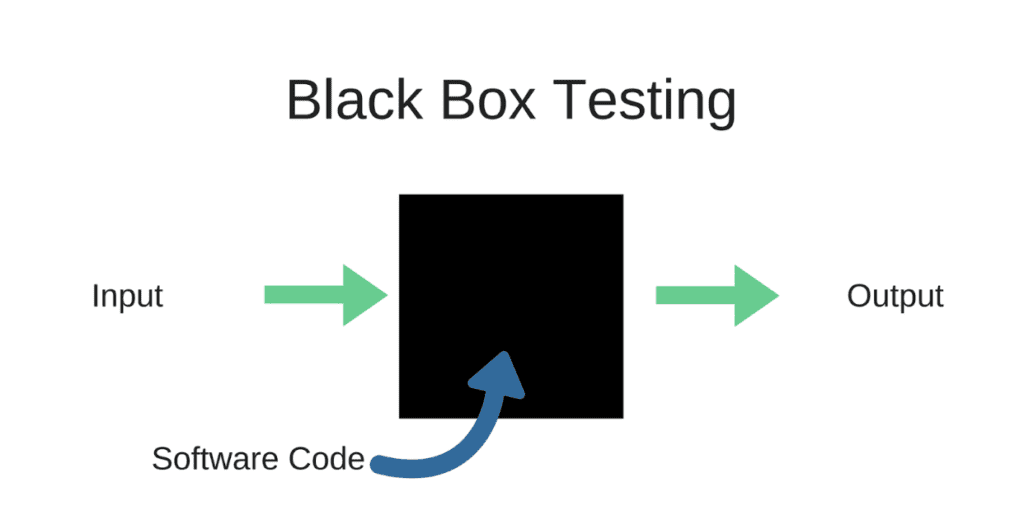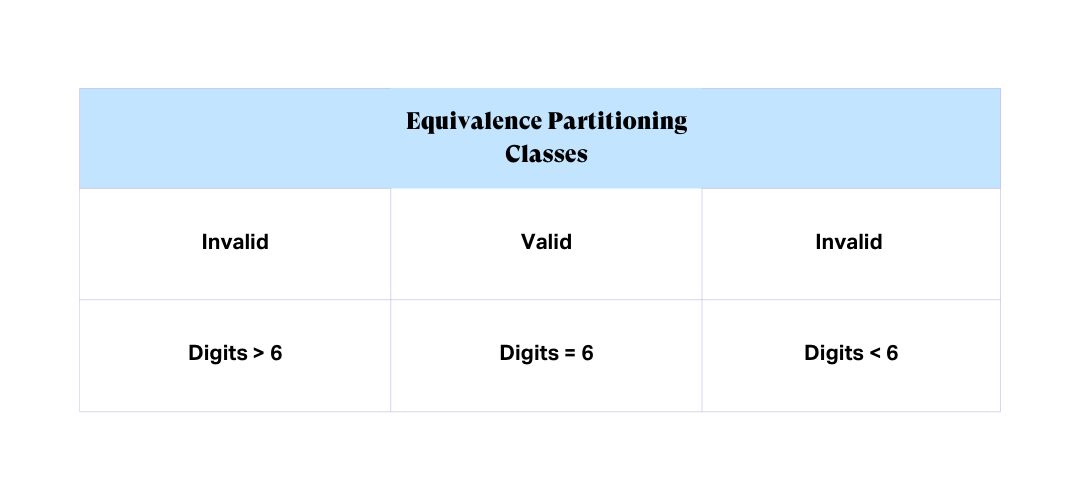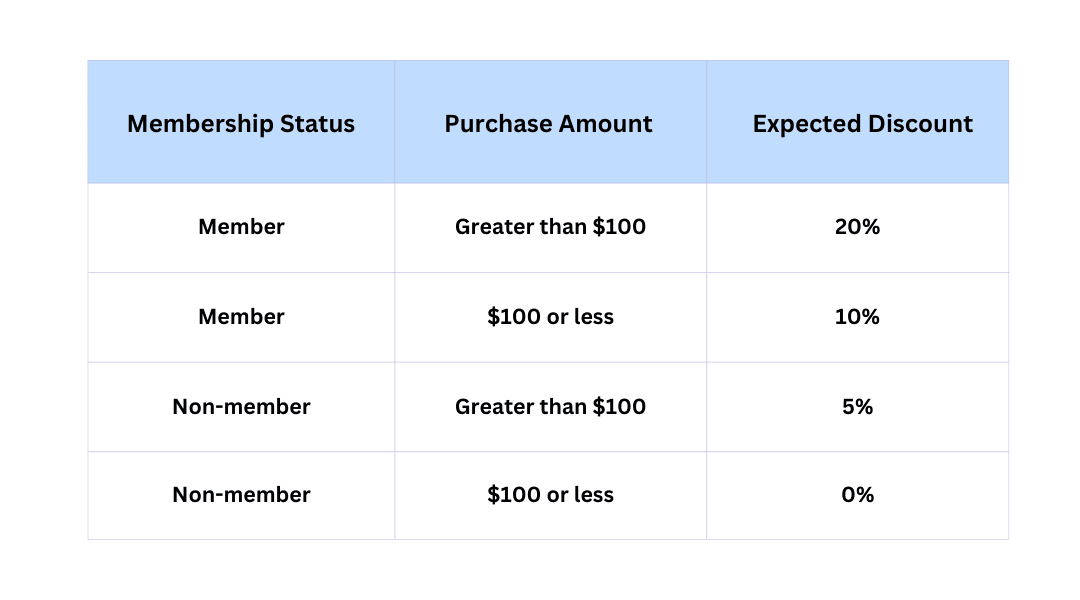The Top Black Box Testing Techniques
Are you also struggling to ensure thorough test coverage while managing time and resources efficiently? Black box testing can help!

Black box testing refers to a whole treasure trove of software testing techniques that help us achieve excellent test coverage while narrowing the number of cases and saving time.
Read on to understand what black box testing is (exactly) and the techniques your team can use to impact your next cycle. You’ll also find some real-world examples along with the techniques.
Table of Contents
- What is Black Box Testing?
- Black Box vs. White Box Testing?
- Benefits of Black Box Testing Techniques
- Black Box Testing Techniques
- Enhance Software Quality with Black Box Testing
What is Black Box Testing?
Black box testing is a software testing method in which testers examine the application’s external functionality without knowing its internal structures or workings. Testers do not need to know how the software is coded or designed. Instead, they create test cases based on user requirements.

This type of testing ensures the application performs its intended functions correctly. This way, testers determine how the system handles expected and unexpected user actions, response time, and usability and reliability issues.
Black box testing example
For instance, you check if the checkout process works smoothly when a user adds items to their cart and proceeds to payment. You also test how the system handles errors, like when a user enters incorrect payment information. You may need to make sure it provides clear error messages and prompts for corrections.
Black Box vs. White Box Testing?
If black box testing represents “unknown” internal software, then think of white box testing as “known.”
With white box testing, a tester must have knowledge of the programming language and system structure being used.
Unlike black box testing, which relies on the perspective of an end-user, white box testing includes techniques that an end user would never simulate because testers are reviewing the code to find issues with security, information flow and speed.
Learn more with our comprehensive guide to black box vs white box testing.
Benefits of Black Box Testing Techniques
Black box testing is valuable for testing teams that want to evaluate software functionality without going into the underlying code. While other testing methods, such as white box and unit testing, may require coding skills, black box testing can be effectively carried out with minimal technical expertise.
Here is a list of a few benefits of black box testing techniques:
- No Programming Knowledge Required: Testers can perform black box testing without understanding the application’s internal code or architecture. This democratizes testing and allows a broader range of team members to participate.
- User-Centric Focus: Tests are designed based on user requirements and expected functionalities. This ensures the software meets the needs and expectations of end-users, which can enhance overall user satisfaction.
- Cost- and Time-Effective: Black box testing is cost-effective and easy to implement. It can be performed using basic tools or record-and-playback software, eliminating the need for expensive testing suites. The straightforward setup and execution process speeds up issue identification and saves time and money.
- Low Chances of False Positives: Since black box testing evaluates the software’s functionality based on requirements and expected behavior, it generally results in fewer false positives. This means reported issues are more likely to be genuine problems, leading to more accurate and reliable test results.
- Preserves Intellectual Property: Black box testing keeps internal code concealed and protects valuable intellectual property. This is particularly important when outsourcing software testing or delivering applications to clients.
Black Box Testing Techniques
Testers use various black box testing techniques to increase test coverage while minimizing the total number of test cases.
These techniques are flexible and can be used across all testing levels, including system, unit, integration, functional, and non-functional testing.
1. Equivalence Partitioning
Equivalence partitioning is a black box testing technique that divides input data into distinct partitions or classes where each class is expected to produce similar results. Equivalence classes are created based on requirements and can include factors like data types, ranges, and input relationships. Make sure you include invalid classes as well to test negative scenarios thoroughly.
The primary idea is that if a system handles one value from a partition correctly, it is likely to handle all other values from that partition correctly. This technique reduces the number of test cases needed by testing only one value from each partition.
Equivalence Partitioning Example
Consider a software application that accepts an OTP (One-Time Password) consisting of exactly six digits. Any input with fewer or more than six digits will be rejected, and the user will be redirected to an error page.
- Valid Partition: Inputs that are exactly six digits long.
- Invalid Partitions: Inputs that are fewer than six digits (e.g., four or five digits) and inputs that are more than six digits (e.g., seven, eight, or ten digits).

2. Boundary Value Analysis
Boundary value analysis (BVA) is a testing technique focused on the values at the edges of input ranges. It is based on the principle that errors often occur at the boundaries of input ranges rather than within the middle of the range. This technique involves testing the minimum and maximum values of the input range, as well as values just outside these boundaries.
Concentrating on these boundary values allows you to identify potential issues that might not be apparent when testing only with values inside the range.
Boundary Value Analysis Example
Consider a software application that requires users to enter their age. Applications may contain specific minimum and maximum age restrictions. The restriction is to enter an age between 18 and 30. If the user enters values
In this scenario, you can use BVA to test your application by choosing values
3. Decision Table Testing
Decision table testing is a structured technique to test combinations of inputs and their corresponding outputs based on business rules or logic. A decision table helps represent complex logic by mapping different conditions and actions into a table format.
Each table row represents a unique combination of conditions, and the associated expected results are specified.
This technique ensures all possible combinations of inputs are tested to verify that the system behaves as expected under various conditions. It is particularly useful for testing systems with complex decision-making logic, as it provides a clear and organized way to design test cases.
Decision Table Testing Example
Let’s consider an example where this technique can be used: a discount system that calculates the percentage of discount based on the membership status of the user and purchase amount.

In this example, the membership status and the purchase amount are inputs, and the expected discount percentage is the output. You can use this table to ensure the system applies the correct discount for each combination of membership status and purchase amount.
4. State Transition Testing
State transition testing is a technique to verify that a system correctly transitions between different states based on input events. It involves creating a state transition diagram or table to map out all possible states, transitions, and events.
Test cases are then designed to validate that the system transitions correctly between states according to the defined rules. This technique is particularly useful for systems with multiple states and transitions, such as workflow systems, user interfaces, or complex applications.
It ensures the system behaves as expected when moving from one state to another.
State Transition Testing Example
An example of state transition testing would be an online shopping cart application. In this application, the cart is empty, customers add items to the cart, proceed to checkout, enter payment and shipping details, and confirm their order.
The transition between these states can be:
- Empty cart -> items added
- Items added -> Proceed to checkout
- Proceed to checkout -> Enter payment and shipping details
- Enter payment and shipping details -> Confirm order

Testing these transitions ensures the system correctly handles state changes and maintains consistent behavior throughout different stages of the shopping process.
5. Exploratory Testing
Exploratory testing is an informal testing approach in which testers actively explore the application without predefined test cases. It flexibly combines learning, test design, and test execution.
This technique detects usability, user experience, or unexpected behavior issues. Exploratory testing allows testers to adapt and focus on areas of the application that seem error-prone or critical.
Exploratory Testing Example
Imagine you need to test a new website where people buy headphones. Start by exploring the site as a regular user would. Browse the headphones, pick a pair, and add them to your cart.
Next, test all the cart functions: adding more items, changing quantities, removing items, and proceeding to checkout.
In exploratory testing, testers use their understanding of the product and user behavior to guide the testing. The outcomes of each test inform the next steps.
6. Error Guessing
Error guessing is a technique in which testers use their experience and intuition to anticipate where defects might occur. Unlike other testing methods that rely on predefined criteria or rules, error guessing involves making educated guesses.
These guesses are based on past experience, common errors, and known problem areas. Testers may focus on complex areas of the application that are prone to mistakes or have a history of issues.
Error Guessing Example
Suppose you have a bank account where you need to deposit money, but the deposit amount must be between $5000 and $7000. Using error guessing, you would try various deposit amounts, including those around the boundary values and those outside the valid range, to identify potential issues.
For instance, you would test:
- A deposit of $4999 (just below the minimum boundary)
- A deposit of $5000 (minimum valid amount)
- A deposit of $6000 (mid-range valid amount)
- A deposit of $7000 (maximum valid amount)
- A deposit of $7001 (just above the maximum boundary)
By testing these values, you can identify whether the system correctly accepts valid deposits. You can also determine if it properly rejects and shows error messages on amounts outside the acceptable range.
Enhance Software Quality with Black Box Testing
Black box testing techniques ensure that software behaves as expected under different conditions. By applying these techniques, you can enhance the reliability and efficiency of true software.
Need help with software testing? Consider partnering with Testlio. Our team of QA experts provides advanced testing services to ensure your software meets the highest quality standards.
Why choose Testlio:
- A vast network of testers for manual testing.
- Flexible and comprehensive managed test automation.
- Fused software testing that combines automated and manual testing.
Visit our website to learn how we can help you achieve flawless software performance!

See how Testlio works or drop us a line to learn how we can customize our solutions to match your particular needs.
